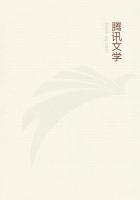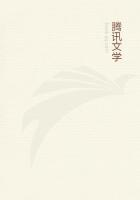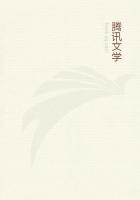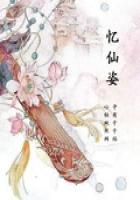Animals in general seem naturally disposed to this intercourse at about the same period of the year, and that is when winter is changing into summer. And this is the season of spring, in which almost all things that fly or walk or swim take to pairing. Some animals pair and breed in autumn also and in winter, as is the case with certain aquatic animals and certain birds. Man pairs and breeds at all seasons, as is the case also with domesticated animals, owing to the shelter and good feeding they enjoy: that is to say, with those whose period of gestation is also comparatively brief, as the sow and the *****, and with those birds that breed frequently. Many animals time the season of intercourse with a view to the right nurture subsequently of their young. In the human species, the male is more under sexual excitement in winter, and the female in summer.
With birds the far greater part, as has been said, pair and breed during the spring and early summer, with the exception of the halcyon.
The halcyon breeds at the season of the winter solstice.
Accordingly, when this season is marked with calm weather, the name of 'halcyon days' is given to the seven days preceding, and to as many following, the solstice; as Simonides the poet says:
God lulls for fourteen days the winds to sleep In winter; and this temperate interlude Men call the Holy Season, when the deep Cradles the mother Halcyon and her brood.
And these days are calm, when southerly winds prevail at the solstice, northerly ones having been the accompaniment of the Pleiads.
The halcyon is said to take seven days for building her nest, and the other seven for laying and hatching her eggs. In our country there are not always halcyon days about the time of the winter solstice, but in the Sicilian seas this season of calm is almost periodical. The bird lays about five eggs.
9(The aithyia, or diver, and the larus, or gull, lay their eggs on rocks bordering on the sea, two or three at a time; but the gull lays in the summer, and the diver at the beginning of spring, just after the winter solstice, and it broods over its eggs as birds do in general. And neither of these birds resorts to a hiding-place.)The halcyon is the most rarely seen of all birds. It is seen only about the time of the setting of the Pleiads and the winter solstice. When ships are lying at anchor in the roads, it will hover about a vessel and then disappear in a moment, and Stesichorus in one of his poems alludes to this peculiarity. The nightingale also breeds at the beginning of summer, and lays five or six eggs; from autumn until spring it retires to a hiding-place.
Insects copulate and breed in winter also, that is when the weather is fine and south winds prevail; such, I mean, as do not hibernate, as the fly and the ant. The greater part of wild animals bring forth once and once only in the year, except in the case of animals like the hare, where the female can become superfoetally impregnated.
In like manner the great majority of fishes breed only once a year, like the shoal-fishes (or, in other words, such as are caught in nets), the tunny, the pelamys, the grey mullet, the chalcis, the mackerel, the sciaena, the psetta and the like, with the exception of the labrax or basse; for this fish (alone amongst those mentioned) breeds twice a year, and the second brood is the weaker of the two. The trichias and the rock-fishes breed twice a year; the red mullet breeds thrice a year, and is exceptional in this respect.
This conclusion in regard to the red mullet is inferred from the spawn; for the spawn of the fish may be seen in certain places at three different times of the year. The scorpaena breeds twice a year. The sargue breeds twice, in the spring and in the autumn. The saupe breeds once a year only, in the autumn. The female tunny breeds only once a year, but owing to the fact that the fish in some cases spawn early and in others late, it looks as though the fish bred twice over. The first spawning takes place in December before the solstice, and the latter spawning in the spring. The male tunny differs from the female in being unprovided with the fin beneath the belly which is called aphareus.
10
Of cartilaginous fishes, the rhina or angelfish is the only one that breeds twice; for it breeds at the beginning of autumn, and at the setting of the Pleiads: and, of the two seasons, it is in better condition in the autumn. It engenders at a birth seven or eight young.
Certain of the dog-fishes, for example the spotted dog, seem to breed twice a month, and this results from the circumstance that the eggs do not all reach maturity at the same time.
Some fishes breed at all seasons, as the muraena. This animal lays a great number of eggs at a time; and the young when hatched are very small but grow with great rapidity, like the young of the hippurus, for these fishes from being diminutive at the outset grow with exceptional rapidity to an exceptional size. (Be it observed that the muraena breeds at all seasons, but the hippurus only in the spring. The smyrus differs from the smyraena; for the muraena is mottled and weakly, whereas the smyrus is strong and of one uniform colour, and the colour resembles that of the pine-tree, and the animal has teeth inside and out. They say that in this case, as in other similar ones, the one is the male, and the other the female, of a single species. They come out on to the land, and are frequently caught.) Fishes, then, as a general rule, attain their full growth with great rapidity, but this is especially the case, among small fishes, with the coracine or crow-fish: it spawns, by the way, near the shore, in weedy and tangled spots. The orphus also, or sea-perch, is small at first, and rapidly attains a great size. The pelamys and the tunny breed in the Euxine, and nowhere else. The cestreus or mullet, the chrysophrys or gilt-head, and the labrax or basse, breed best where rivers run into the sea. The orcys or large-sized tunny, the scorpis, and many other species spawn in the open sea.
11

